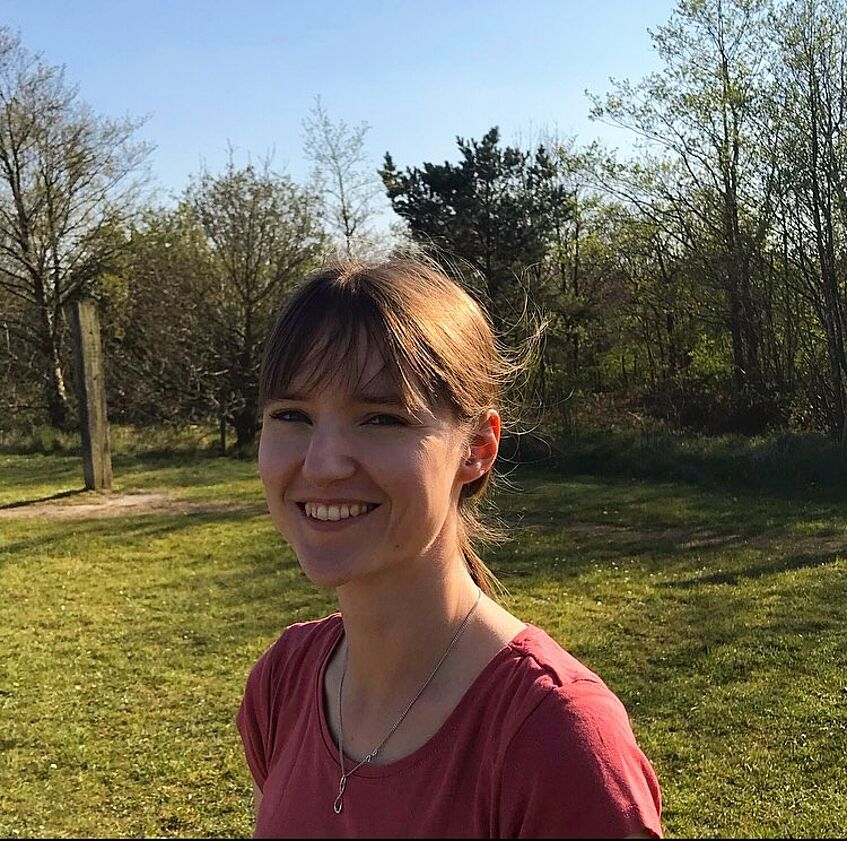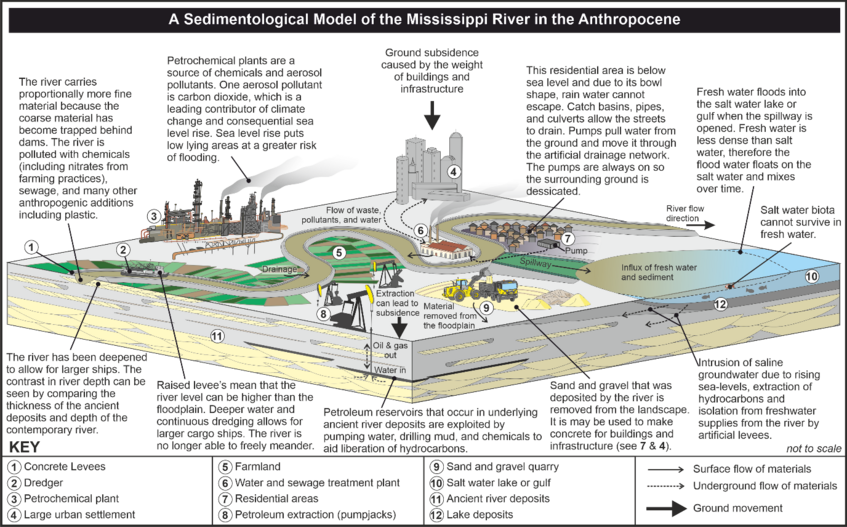Catherine RUSSELL
ABOUT ME
After completing my PhD in fluvial sedimentology, I undertook a Teaching Fellowship at the University of Leicester from 2018-2021. I am presently affiliated with the University of Leicester, and Louisiana State University, and am undertaking part-time work as an Associate at RPS.
My technical expertise is in the development of innovative multi-disciplinary approaches (geology, geomorphology, and remote sensing), for analysis of the composition and architecture of rivers on both Earth and Mars. River behaviour is affected by climate, vegetation, water, and sediment type and volume, as well as human intervention, and the aim of my research is to better understand the long-term effects of human impact on surface processes across Earth Systems in the Anthropocene, particularly in river systems.
I have extensive teaching experience and achieved Fellow of the Higher Education Academy in 2020 through the PGCAPP route with distinction. I am an LGBTQ+ ally and received a student nomination for best supervisor.
I have excellent communication and interpersonal skills that enable me to develop and maintain an international research network. I lead the multidisciplinary Anthropocene Sediment Network that I founded in August 2020.

PROJECT DESCRIPTION
Wild rivers across the globe have been transformed by humans for many thousands of years. The human impact on rivers is a present and ever-growing challenge that manifests as complex social, physical, and geographical constraints. Rivers have been used to sustain agriculture and urban centers, whilst themselves being mined for their resources, and subsequently altered to fit increasing societal requirements.
Arguably, no river now remains natural, as even remote rivers have been impacted by global climate change and airborne pollution. As such, we consider the signals and deposits that future geologists will see preserved and reworked in the geological record. However, many of the models presently used to understand river systems have limited applicability for understanding present regimes, as they represent natural systems acting by their own autonomy.
Today in the Anthropocene, we find that many rivers are limited in their capacity to be wild via a spectrum of scenarios imposed upon them through human action.
I work on a range of scales from understanding the wide-reaching impacts of engineering, [img.1], to determining the impact of plastic on natural sediment processes [img.2].
Through these models, we are developing a new geological context for rivers to identify challenges for their management as they respond to future change. Additionally, we will combine our findings with existing principles to predict and understand the sedimentary record of Anthropocene fluvial systems, including signal modification.
KEY PUBLICATIONS
Waldschläger K., Brückner M.Z.M., Carney Almroth B., Hackney C.R., Adyel T.M., Alimi S.O., Belontz S.L., Cowger W., Doyle D., Gray A., Kane I., Kooi M., Kramer M., Lechthaler S., Michie L., Nordam T., Pohl F., Russell C., Thit A., Umar W., Valero D., Varrani A., Warrier AK., Woodall C. L., Wu N. (in review). Learning from natural sediments to tackle microplastics challenges: a multidisciplinary perspective. Earth-Science Reviews.
Russell, C. E., Fernandez R., Gabbott S. and Parsons D. Plastic fundamentally impacts sand transport in fluvial systems. [PRE-PRINT].
Russell C. E., Waters C. N., Williams M., Himson S., Holmes R., Burns A. and Zalasiewicz J. 2021. Geological Evolution of the Mississippi River into the Anthropocene, Anthropocene Review 8, 115-140
Gabbott, S.E., Key, S., Russell, C., Yohan, Y. Zalasiewicz, J. 2020. The Geography and Geology of Plastics: environmental distribution and fate. Plastic Waste and Recycling: Environmental Impact, Societal Issues and the Circular Economy. Elsevier.
Banks V.J., Palumbo-Roe B. and Russell C.E. (2019). 'The Hyporheic Zone' in "Hydrology - The Science of Water," 978-1-83880-324-7. IntechOpen. UK.
Weirdt J.D., Vandenbroucke T.R.A., Cocq J., Russell C., Davies J.R., Melchin M. and Zalasiewicz J. (2019). Chitinozoan biostratigraphy of the Rheidol Gorge Section, Central Wales, UK: a GSSP replacement candidate for the Rhuddanian-Aeronian boundary. Papers in Palaeontology.
Russell C.E., Mountney N.P., Hodgson D. and Colombera L. (2019). A novel approach for prediction of lithological heterogeneity in fluvial point-bar deposits from analysis of meander morphology and scroll-bar pattern. In: Fluvial Meanders and their Sedimentary Products in the Rock Record (Eds Ghinassi M., Colombera L., Mountney N.P. and Reesink A.J.H), IAS Special Publication, 48, 385-417.
Melchin, M.J., Davies, J.R., De Weirdt, J., Russell, C., Vandenbroucke, T.R.A. and Zalasiewicz, J.A. (2018) Integrated stratigraphic study of the Rhuddanian-Aeronian (Llandovery, Silurian) boundary succession at Rheidol Gorge, Wales : a preliminary report. Nottingham, UK, British Geological Survey, 16pp. (OR/18/139) (Unpublished)
Russell C.E., 2017. Prediction of sedimentary architecture and lithological heterogeneity in fluvial point-bar deposits. Doctoral dissertation, University of Leeds. 351 pp.
Colombera, L., Mountney, N.P., Russell, C.E., Shiers, M.N. and McCaffrey, W.D. (2017). Geometry and compartmentalization of fluvial meander-belt reservoirs at the barform scale: quantitative insight from outcrop, modern and subsurface analogues. Marine and Petroleum Geology, 82, 35–55.
Russell, C.E., Vandenbroucke, T.R.A., Zalasiewicz, J.A., Williams, M., Davies, J.R., Waters, R.A. and Molyneux, S.G. (2013). The Rheidol Gorge (central Wales) as potential stratotype for the Rhuddanian-Aeronian stage boundary: a progress report. In LINDSKOG, A. & MEHLQVIST, K. 2013. Proceedings of the 3rd IGCP 591 Annual Meeting – Lund, Sweden, 9–19 June 2013, Lund University, 285–286.
Zalasiewicz, J., Russell, C., Snelling, A. and Williams, M. (2011). The systematic relationship of the monograptid species acinaces Törnquist, 1899 and rheidolensis Jones, 1909. Proceedings of the Yorkshire Geological Society, 58, 351-356.


